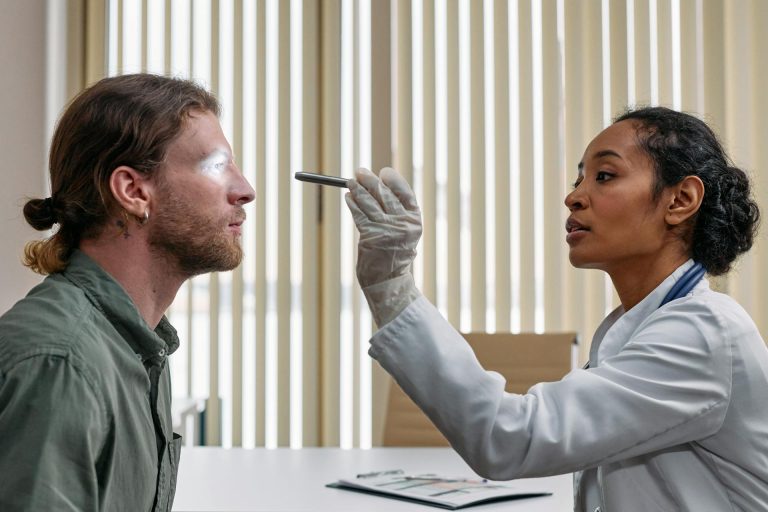The Facts Behind Dental Extraction in Dogs: Evaluating its Rewards and Risk
Dental extractions are routinely performed in canine animal dentistry when the advantages of tooth extraction outweigh any possible disadvantages. Although it may seem intimidating, this procedure can be a crucial phase in improving our dog friends’ general dental health, alleviating their misery, and getting rid of infestations. Before making this choice, it is important to carefully weigh all the implications, including the dangers and any potential health benefits.
The purpose of this argument is to evaluate the causes of dental extractions in dogs and look at the short- and long-term impacts on dogs’ oral and overall health.
Recognizing Canine Dental Extraction
Recognising the symptoms of dental illness and discomfort in dogs is the first step toward understanding when tooth extraction is necessary. Common warning indicators include swollen gums, chronic bad breath, noticeable tartar buildup, and the dog exhibiting discomfort during feeding. It ought to consult a veterinarian as soon as these symptoms appear, as they can precisely diagnose the underlying cause and determine whether extraction is necessary. Extracting the damaged tooth or teeth is necessary to lessen pain and stop the infection from getting worse. The dog’s general and oral health will benefit in the long run from this surgery. When making this decision, the welfare of the pet comes first.
Motives for Dental Extractions
Several conditions can warrant a dental extraction in dogs:
- Severe tooth decay
- Advanced periodontal disease
- Infection
- Tooth root abscesses
- Impacted teeth
- Crowding within the mouth
- Broken or fractured teeth
- Malocclusions (misaligned teeth)
Identifying these issues early can often lead to better outcomes for your dog.
The Benefits of Dental Extractions for Dogs
Enhanced Dental Health
Problematic tooth extraction may greatly improve a dog’s oral health. It keeps the infection and pain from spreading to other teeth and areas of the body in addition to eradicating them at their source. Maintaining healthy teeth and gums can help prevent secondary health problems like kidney infections and heart disease that can affect dogs with poor oral health.
Pain control
The main benefit of having a bad or rotting tooth extracted for a dog is that it relieves the dog’s ongoing suffering. Toothaches in dogs can be just as painful and incapacitating as those in people. A dog’s demeanour usually improves substantially after a successful teeth extraction since they are no longer in silent discomfort.
Prevention of Further Complications
If dental issues are not treated, there could be serious repercussions. Tooth decay-related infections might potentially migrate to the bloodstream or jawbone. By performing quick extractions, veterinarians can prevent these dangerous and perhaps lethal scenarios.
Hazards Associated with Extracting Teeth
Dangers Associated with Anaesthesia
Anaesthesia is necessary for every surgical treatment, including tooth extractions, yet it has hazards. Potential complications can range from minor issues, such as temporary lethargy, to more severe conditions, including allergic reactions or even cardiac arrest. However, modern veterinary practices employ comprehensive pre-surgical evaluations to mitigate these risks.
Possible Side Effects Following Surgery
There is a chance that issues like infection, severe bleeding, or a tooth root fragment left in the jaw will occur after the extraction. You should talk to your veterinarian about the warning indications of post-operative difficulties and what to do in their event. Effective management of these risks is possible with the right attention.
Effects on Oral Health Over Time
Sometimes having a tooth extracted causes long-term problems with dental health. For instance, a dog’s bite or jaw structure may alter as a result of neighbouring teeth shifting. Dogs may also be more prone to plaque and tartar accumulation following an extraction, necessitating further treatments.
Things to Consider for Pet Owners
Warning Signs of Dental Extractions Needed
Watch out for these symptoms, since they may suggest that your dog needs a tooth extraction:
- Reluctance to chew hard food
- Dropping food while eating
- Excessive or bloody saliva
- Swollen face or mouth
- Bad breath
- Unwillingness to play with chew toys
- Discernible alterations to the gums or teeth
If you encounter any of these designations, your veterinarian must do a dental examination.
Getting Your Dog Ready for the Process
To completely evaluate the issue, your veterinarian could advise pre-operative bloodwork and dental X-rays before the extraction. In addition, they could recommend an overnight fast before the procedure and provide a prescription for painkillers or antibiotics. Adhering to all pre-operative instructions is important to guarantee procedure safety and success.
Postoperative Surgery: Rehabilitation and Surveillance
You will receive instructions from your veterinarian for at-home care after the extraction. Medications, soft foods, and refraining from physically demanding activities that can exacerbate the blood clot forming at the extraction site are some examples of this advice. You must closely follow these instructions to expedite your dog’s recuperation and prevent problems.
Conclusion
To sum up, dental extractions in dog are important medical procedures that offer both short-term and long-term health advantages. While this may seem like a big step for pet owners, knowing that the goal of the treatment is to improve our dogs’ quality of life, avoid further health issues, and relieve discomfort can help owners make a more informed choice. While there are hazards involved in tooth extractions, they can be properly controlled with the help of experienced veterinarians and appropriate post-operative care.
Owners of dogs should be on the lookout for their pet’s dental health, identifying any early warning indicators of dental distress and seeking urgent veterinary attention. By doing this, people can preserve their pets’ health and happiness by making educated decisions about tooth extractions and other treatments. To make these choices and protect the well-being of these cherished family members, pet owners and veterinary specialists must work together.





